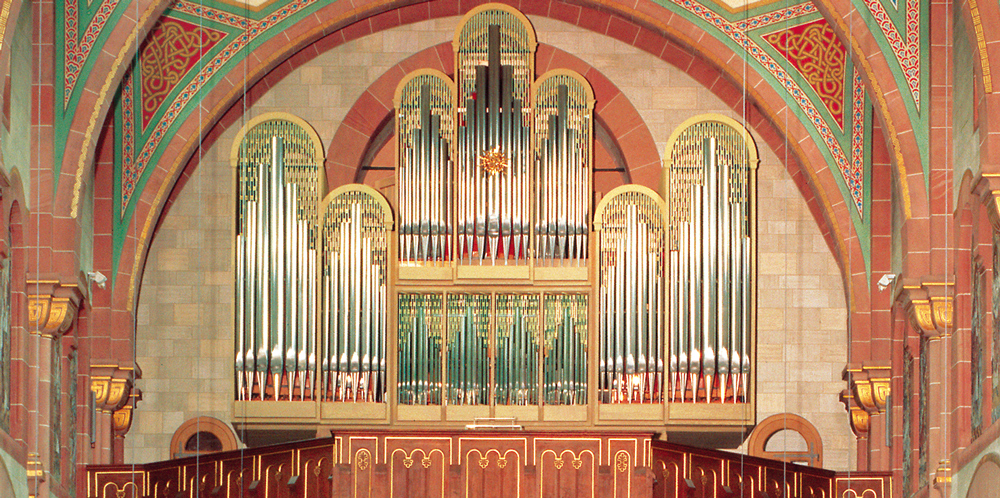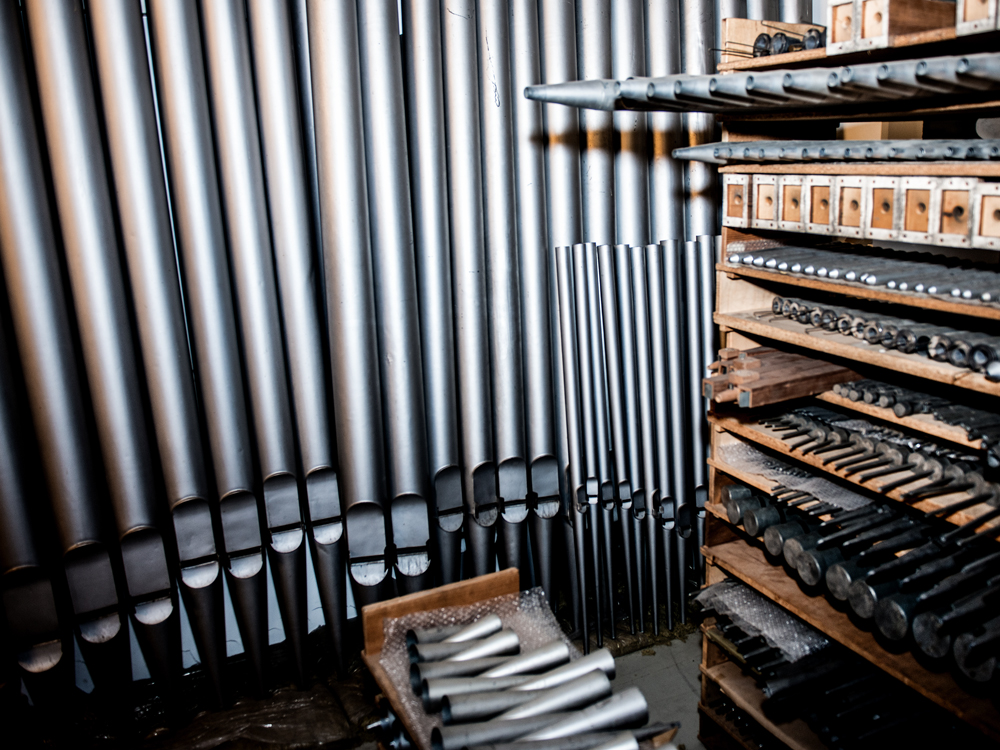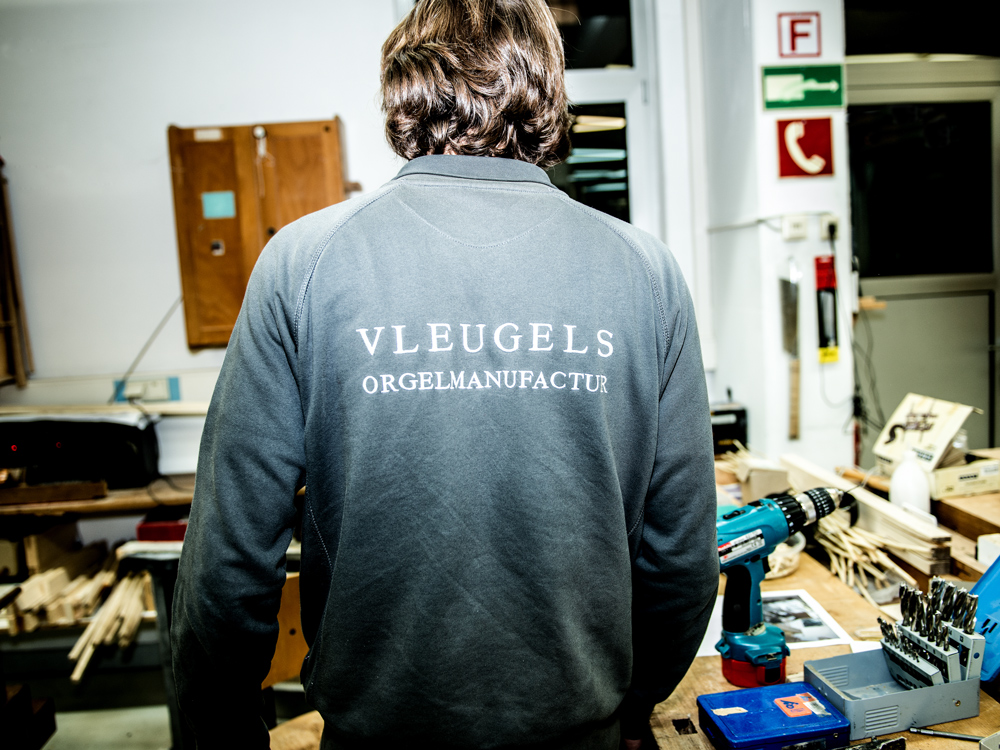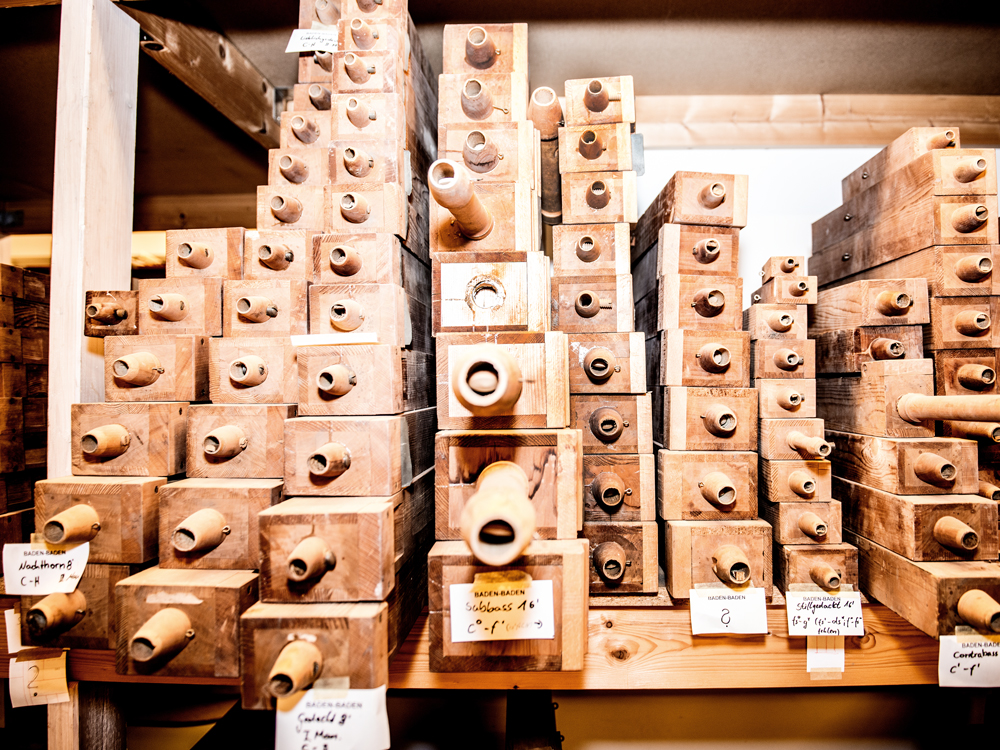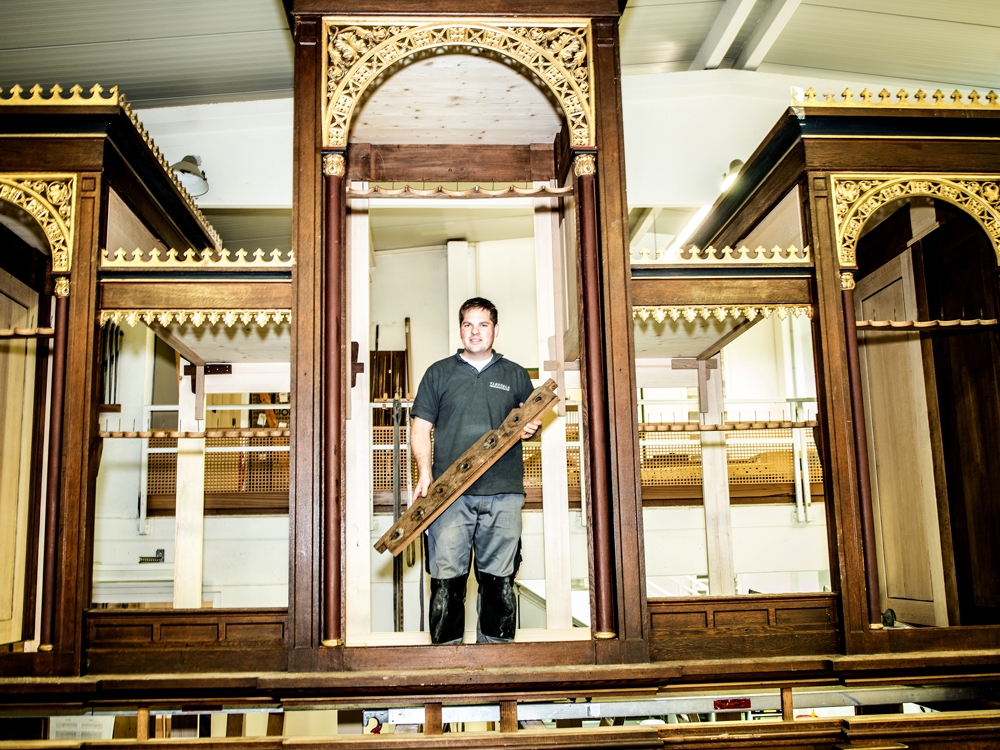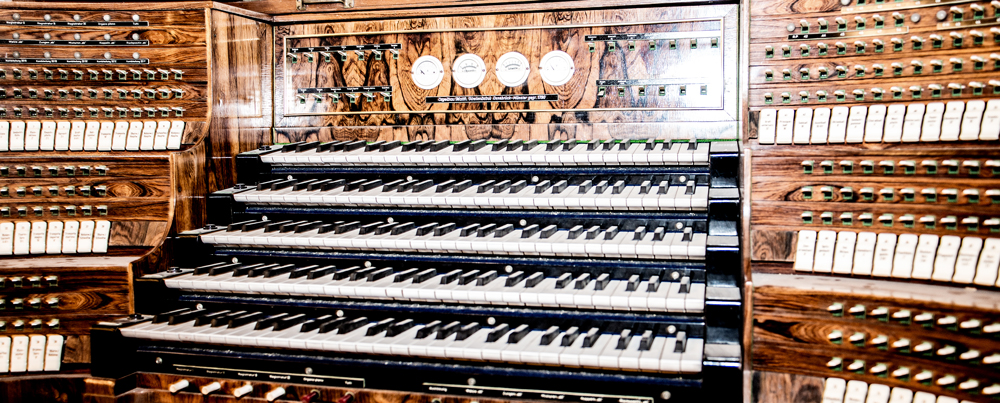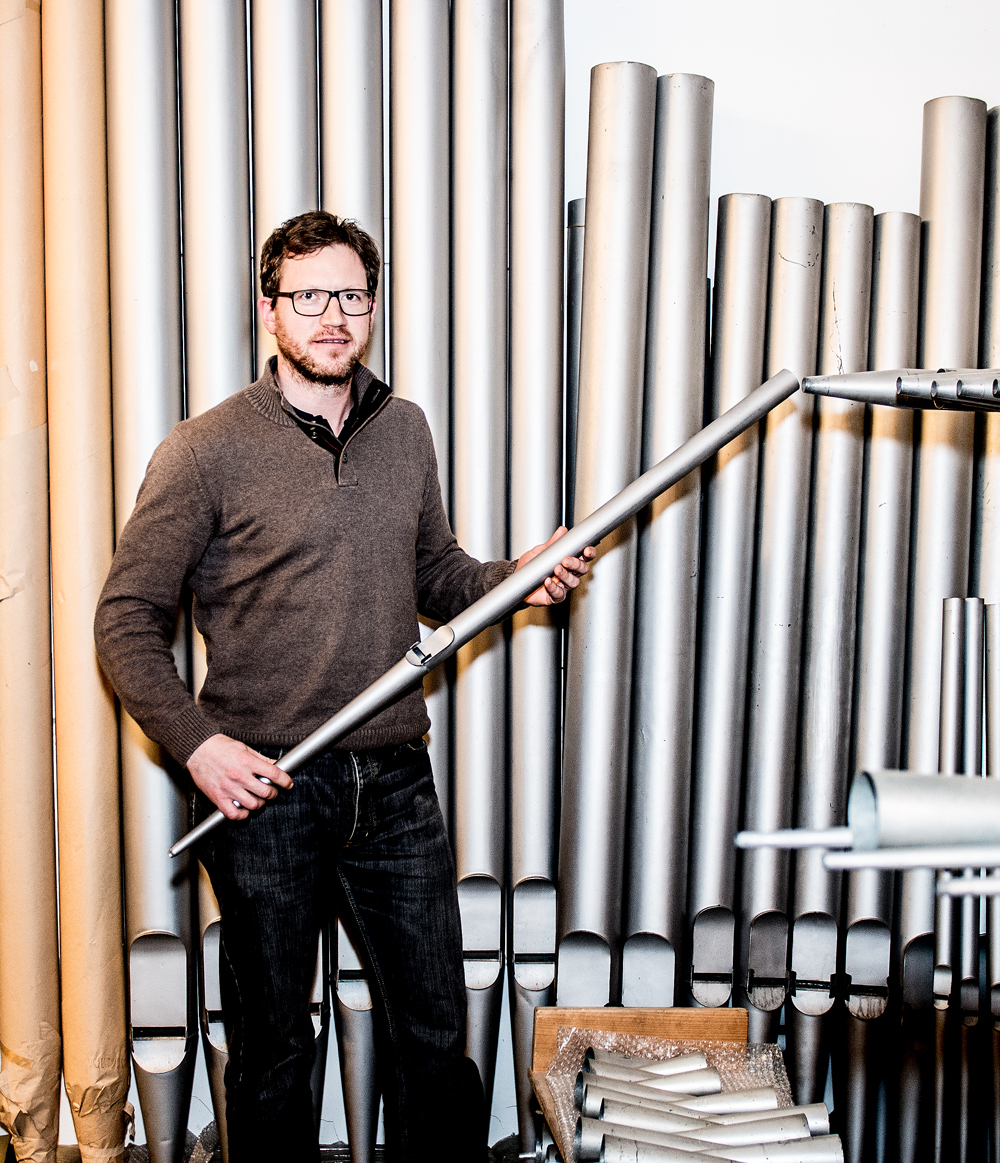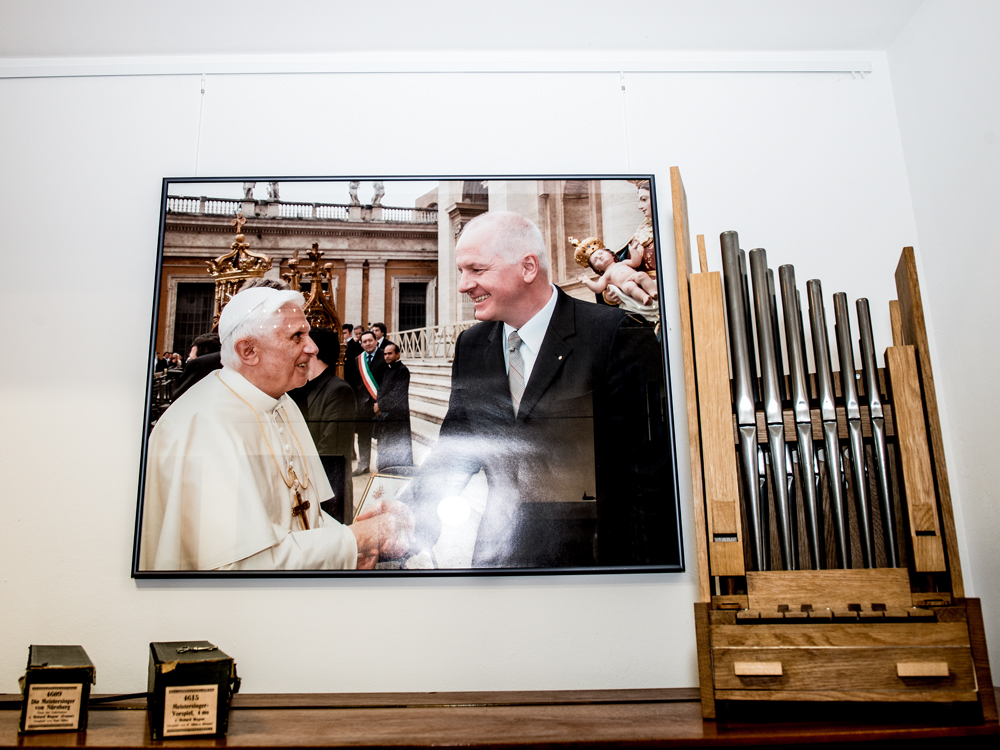Hans-Georg and Johannes Vleugels run one of Germany’s biggest pipe organ manufacturing companies in the Odenwald. In Hardheim, they build, restore and construct the “queen of musical instruments” – in the third generation.
It can sound bright like a flute or velvety and warm like an oboe. But it is able to do even more: like possess the musical quality of an entire orchestra. “Queen of musical instruments” is what the organ is called. As early as 1619, the composer Michael Praetorius expressed his fascination for the instrument with the words: “The organ alone contains all other musical instruments, large and small, within itself.”
Who would be surprised then by the huge dimensions of this organ which reaches up almost ten meters to the hall ceiling of “Orgelmanufactur Vleugels”’s workshop? Hans-Georg Vleugels is a tall man. But in front of this historical instrument from St. Stephen’s Church in Lahr-Reichenbach he almost looks small – which is not only because of the dimensions of the instrument, but also because of the very special task of an organ.
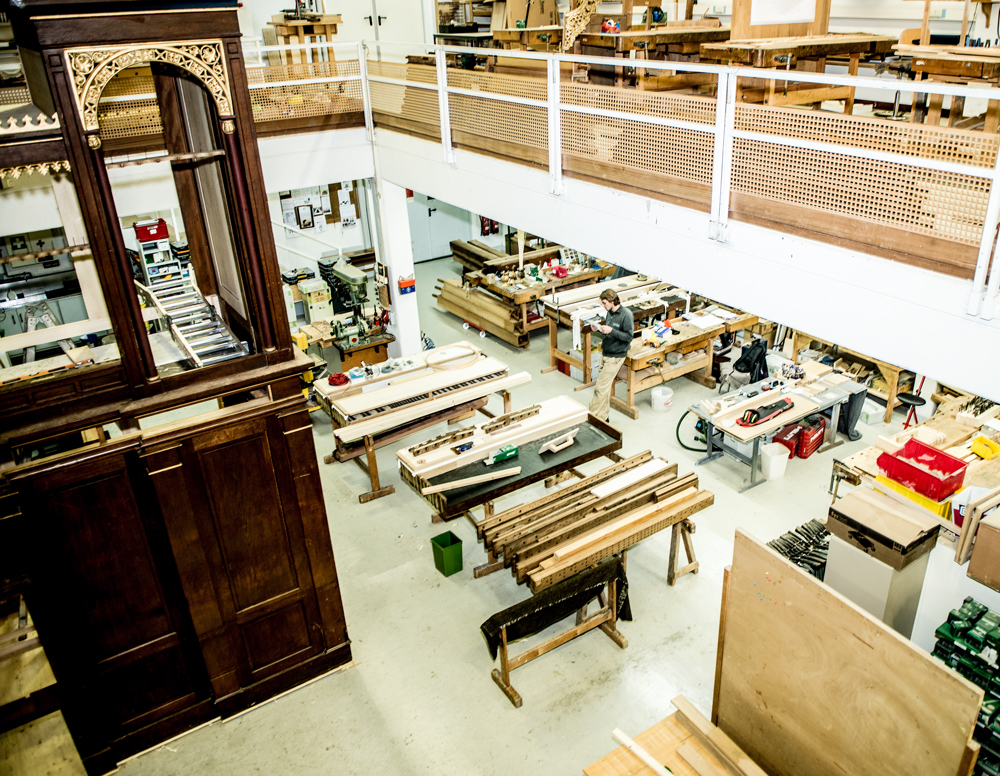
Work in progress – here, history is being made: In the workshop historical organs are being lovingly restored.
“It is the traditional musical instrument which adds a wonderful splendor to the Church’s ceremonies,“ it says in the Second Vatican Council, “and powerfully lifts up man’s mind to God”. Yes, Hans-Georg Vleugels knows the fascination of this kind of “devine music” very well, he is himself a devout Catholic. But as the owner of the organ factory in the town Hardheim in the Odenwald, he is also master organ builder, designer, restorer, manager and chronicler. In 1958, his father Hans Theodor Vleugels took over the tradition-steeped organ manufacturing company, which was founded by Ignaz Dörr from Hardheim in 1855, from the Bader brothers. Since then, more than 400 “queens” were built or restored in the „Manufactur“ which he today runs together with his son Johannes and 20 employees – and many of these musical instruments have extraordinary stories to tell.
There is the small but exquisite “Vleugels Truhenorgel” (chest organ), an especially beautiful specimen that Hans-Georg Vleugels gave Pope Benedict XVI as a present in 2006 – personally in the Vatican. Or the one with which the Mainz Cathedral Choir goes on tour. There is also this enormous organ which the Vleugels crafted for the Trinity Church in Leipzig, the biggest new church building in the newly formed German states since the reunification of 1990. It boasts not only impressive 46 organ stops, i.e. pipe rows, but it is also able to electronically save up to 40,000 sound combinations. “There are of course organs that Baroque compositions sound best with,” Vleugel says knowingly, whose greatest passion right after flying as a hobby is music which he always discovers new aspects of. Long since, the “queen” together with its complex sound arrived in the modern era, even in experimental areas. It thus fits into the picture that Hans-Georg Vleugels organises unusual concerts at the St. Alban’s Church in Hardheim. In spring, the electric guitar player Holger Koester will make his guest appearance there. His music will at this event be framed by organ player Horst Berger – of course at the Vleugels organ.
